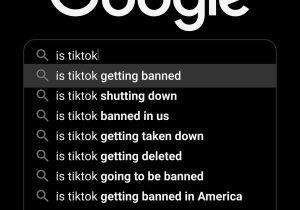Dark Patterns in Apps: Legal Consequences of Deceptive UI Design
Have you ever been tricked into making a purchase on a mobile app or unknowingly subscribed to a service through a series of deceptive clicks? You’re not alone. Many of us have fallen victim to misleading user interface (UI) design in apps, also known as dark patterns. These deceptive techniques may seem like harmless marketing strategies, but they can have serious legal consequences for app developers. In this article, we’ll delve into the world of dark patterns in apps and explore the legal implications of their usage.
The Rise of Dark Patterns in Apps
Dark patterns are design elements that are crafted to manipulate and deceive users into taking actions that they did not intend to, such as making a purchase or subscribing to a service. These tactics are often employed to boost revenue and user engagement, but they also come at a cost to users’ trust and loyalty.
The prevalence of dark patterns in apps has significantly increased over the years. According to a study conducted by the Norwegian Consumer Council, 20 out of 30 popular apps were found to use dark patterns to trick users. These patterns are especially common in free-to-use apps that rely on advertising or in-app purchases for revenue. As users become increasingly aware of these tactics, it has led to a growing concern among regulators and lawmakers.
Types of Dark Patterns in Apps
Dark patterns come in various forms, but they all share one common goal – to exploit human behavior and decision-making tendencies. Let’s take a look at some of the most common types of dark patterns used in apps.
Sneak Into Basket
This dark pattern involves adding an additional or more expensive item into the user’s cart without their knowledge or consent. This can happen when users are making a purchase and, in the midst of the transaction, an extra item is automatically selected or added to their cart. It may seem like a small addition, but it can result in an increase in sales without users being aware of it.
Roach Motel
The Roach Motel is a common dark pattern where users can easily enter but have a difficult time exiting. This is often seen in subscription services, where users are easily lured into signing up for a free trial, but find it challenging to cancel the subscription when it ends. This leads to continuous charges and frustration for users.
The Legal Consequences of Dark Patterns in Apps
The deceptive nature of dark patterns has caught the attention of regulators and lawmakers worldwide. In 2018, the European Union passed the General Data Protection Regulation (GDPR), which includes guidelines on the use of dark patterns. Under the GDPR, any design technique used to “improperly influence users’ decisions” is considered a violation of user privacy rights.
In the United States, the Federal Trade Commission (FTC) has also started to take action against companies that use dark patterns. In 2019, the FTC sued a company for using deceptive UI design to trick users into subscribing to a service. This move has sent a clear message that companies found using dark patterns may face legal consequences.
Fines and lawsuits are not the only consequences that app developers may face for using dark patterns. The use of deceptive tactics can also result in a loss of user trust and loyalty, which can harm a company’s reputation and bottom line in the long run.
Tips for App Developers to Avoid Legal Troubles
In order to avoid falling into legal troubles for using dark patterns, here are some tips for app developers:
Be Transparent
The best way to avoid legal ramifications is to be transparent with users. Clearly state any charges, fees, or subscriptions before the user makes a purchase or signs up for a service.
Use Ethical Practices
Avoid using dark patterns in your app, even if it may provide short-term gains. Not only is it unethical, but it can also result in legal consequences and harm your company’s reputation in the long run.
Provide Easy Exit Options
Make it easy for users to cancel subscriptions or purchases in your app. This not only helps you avoid the Roach Motel dark pattern but also builds trust with your users.
Conclusion
Dark patterns in apps may seem like clever marketing tactics, but they have serious legal consequences. As regulators and lawmakers continue to crack down on their usage, it’s crucial for app developers to use ethical practices and be transparent with their users. By doing so, not only will you avoid legal troubles, but you’ll also build a loyal user base based on trust and transparency.











